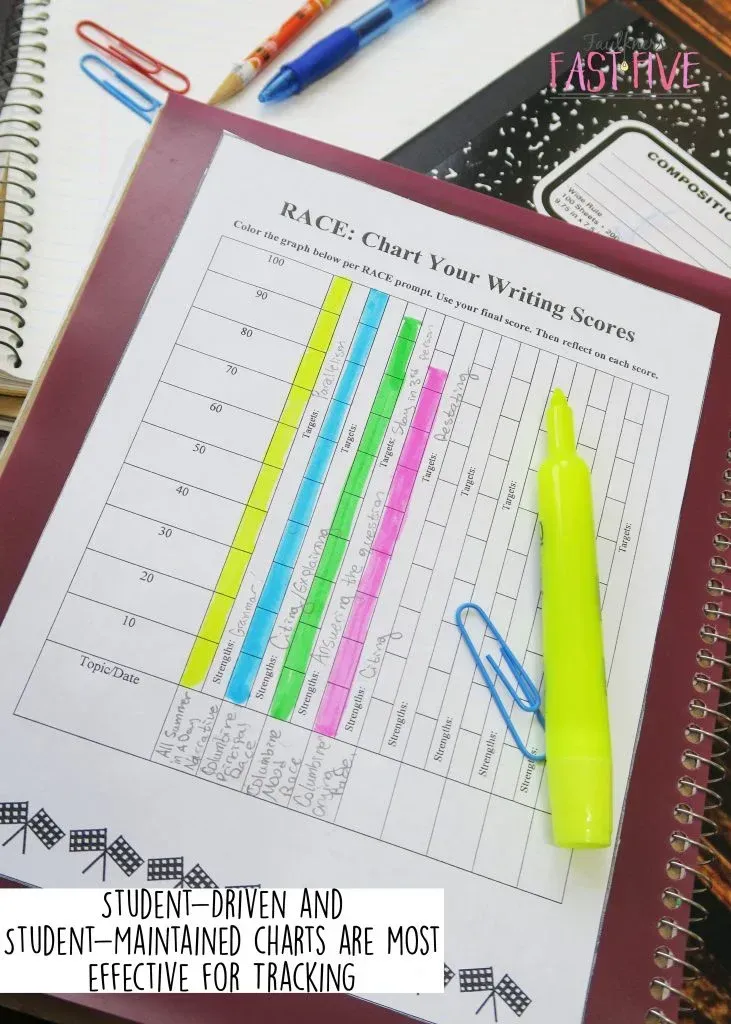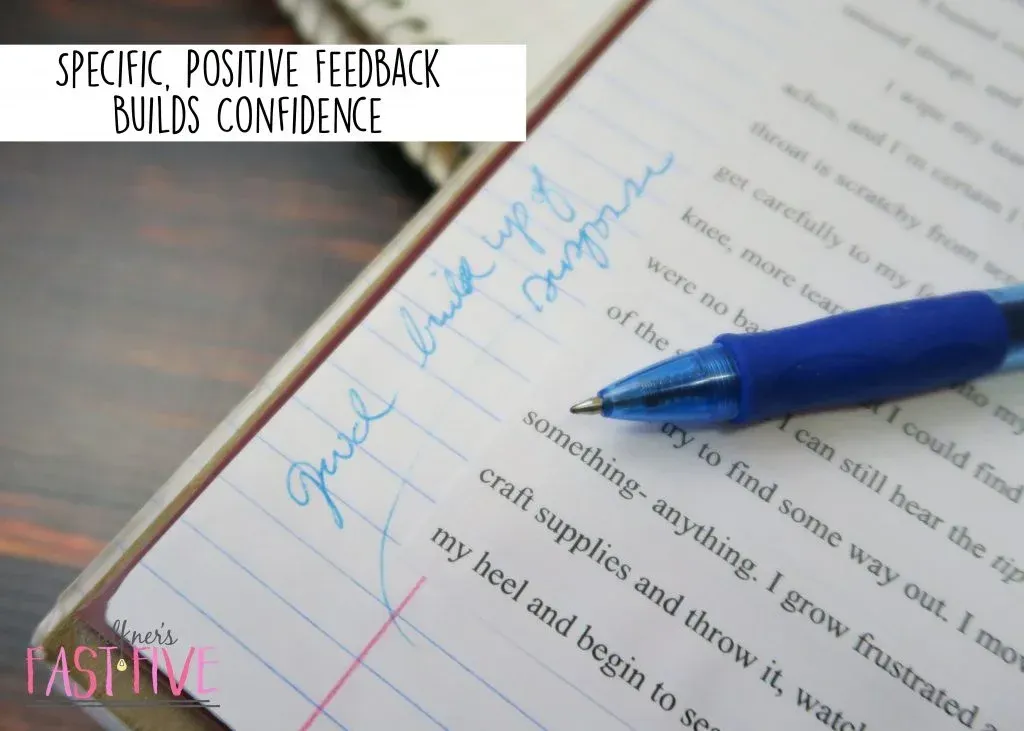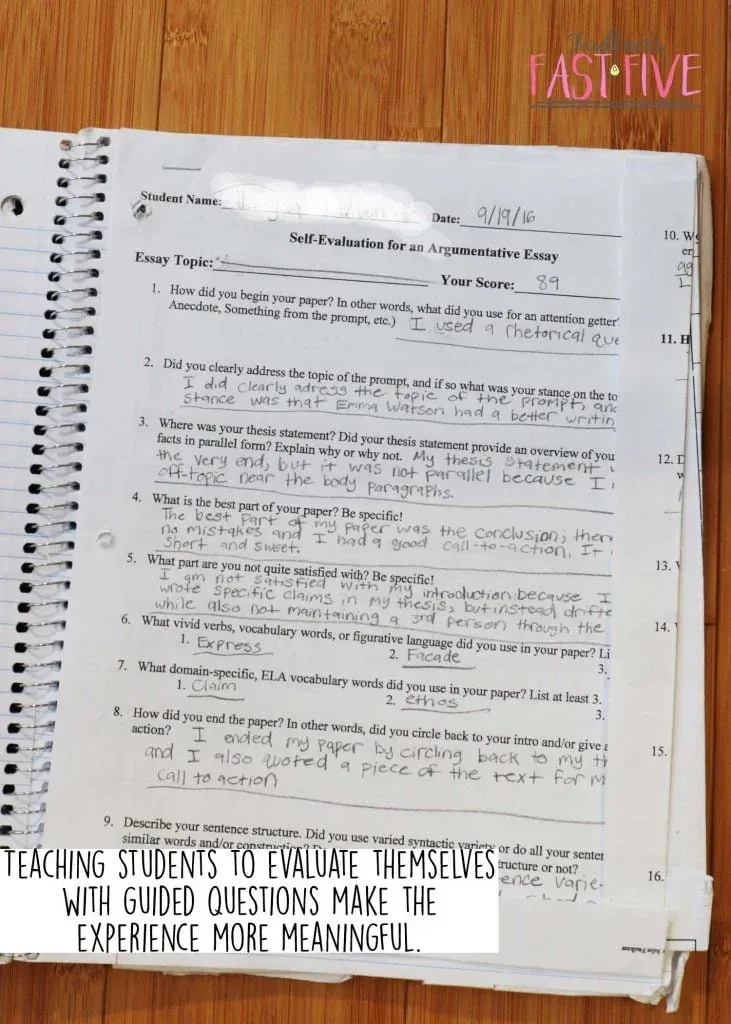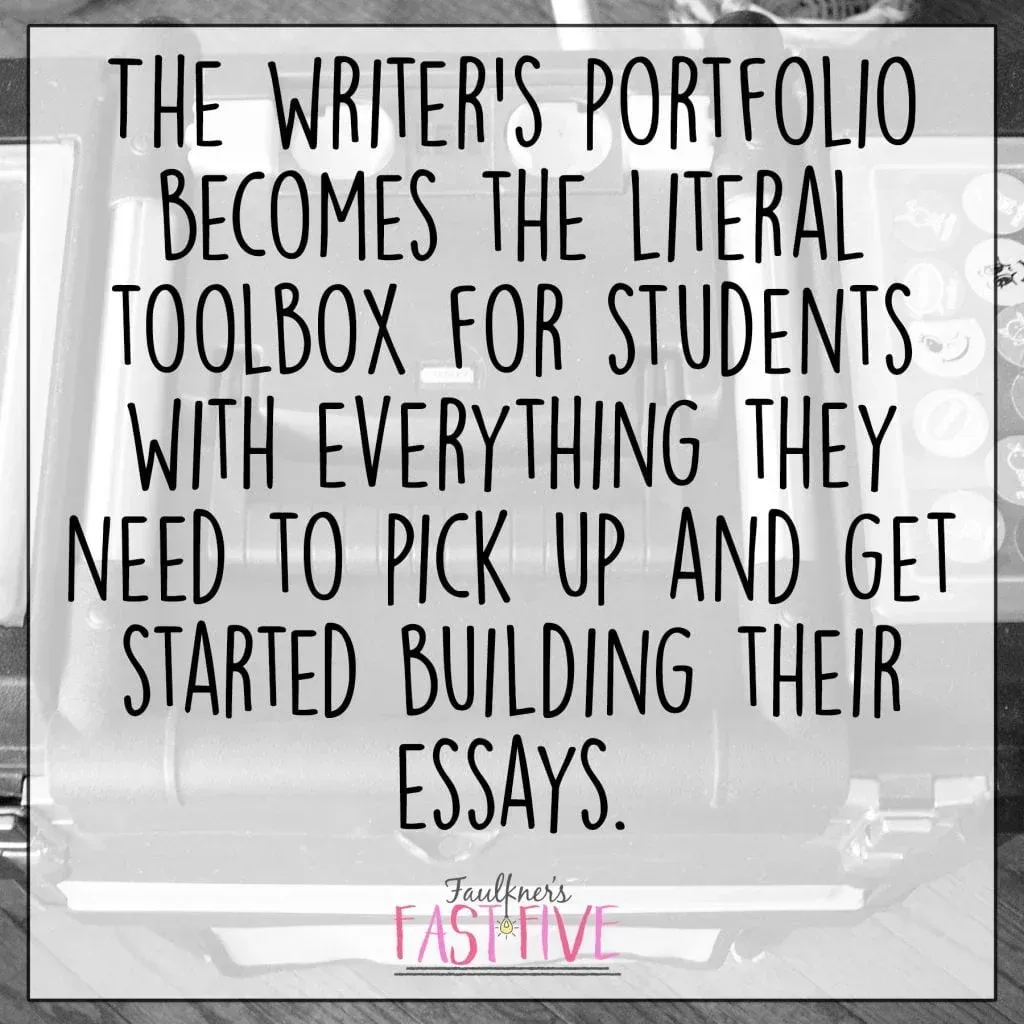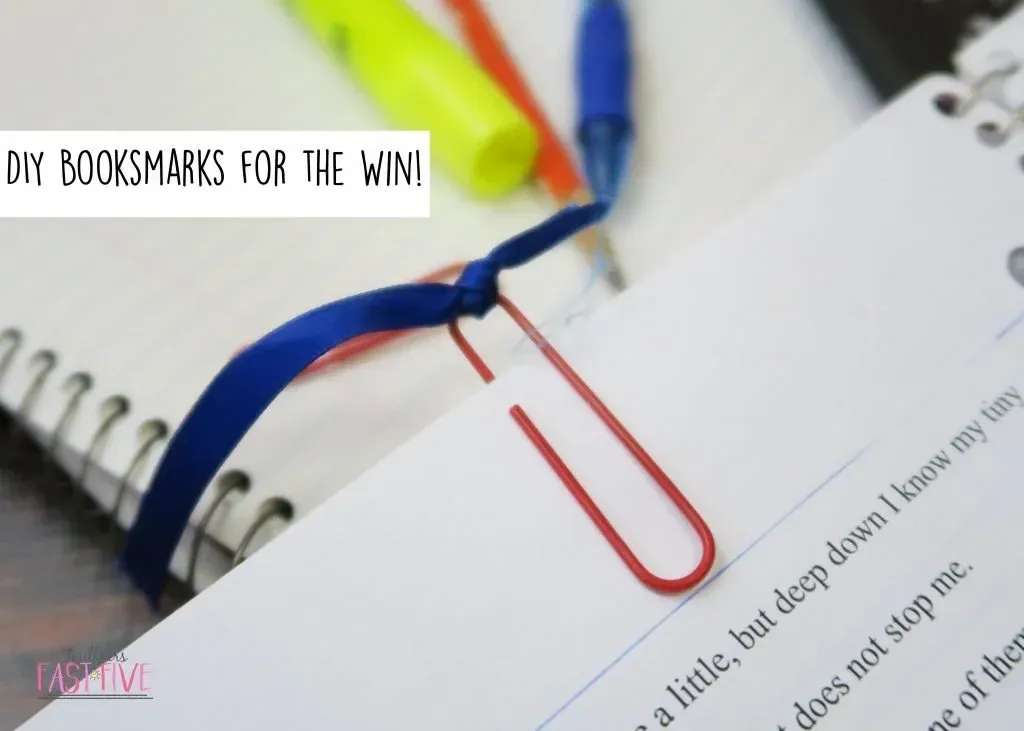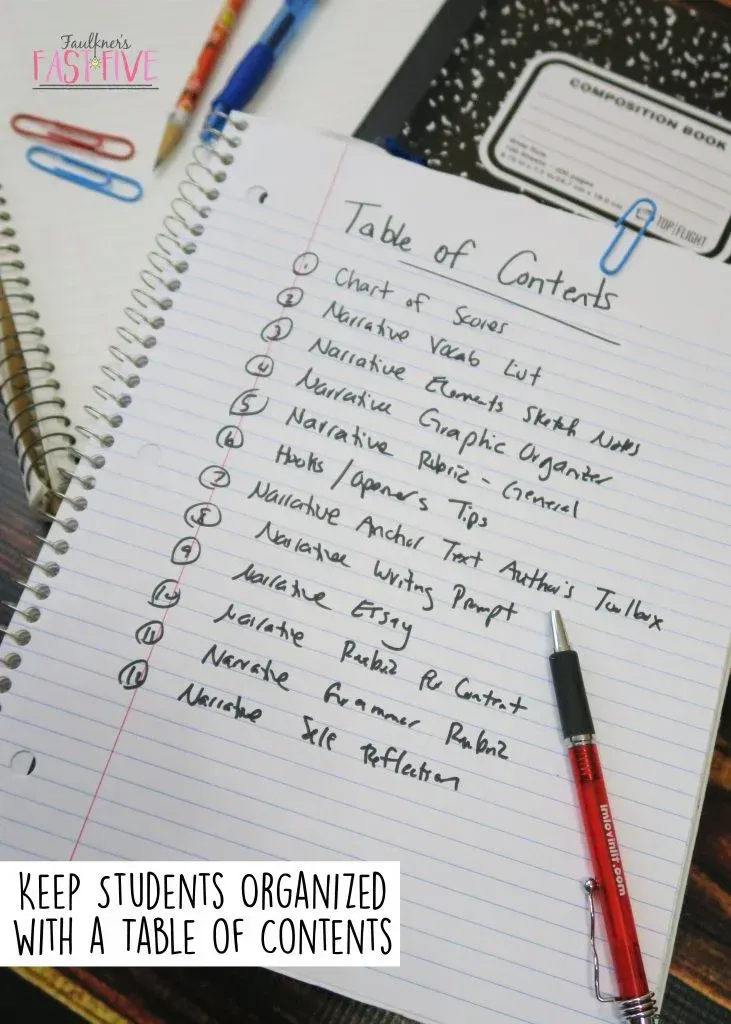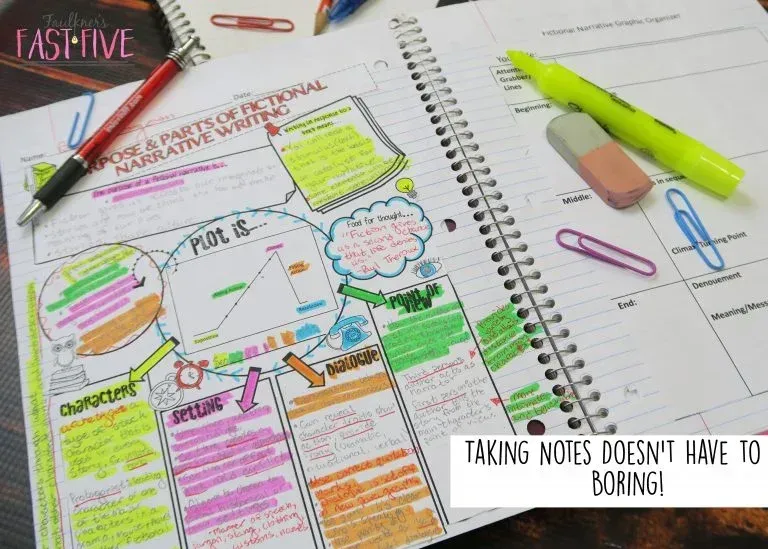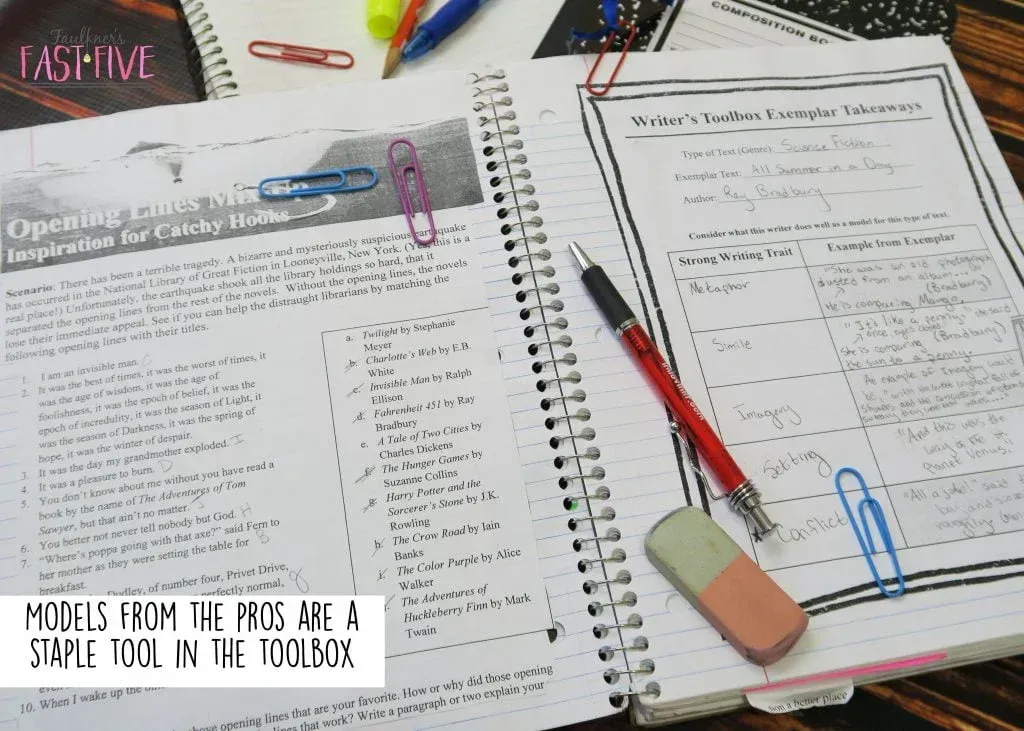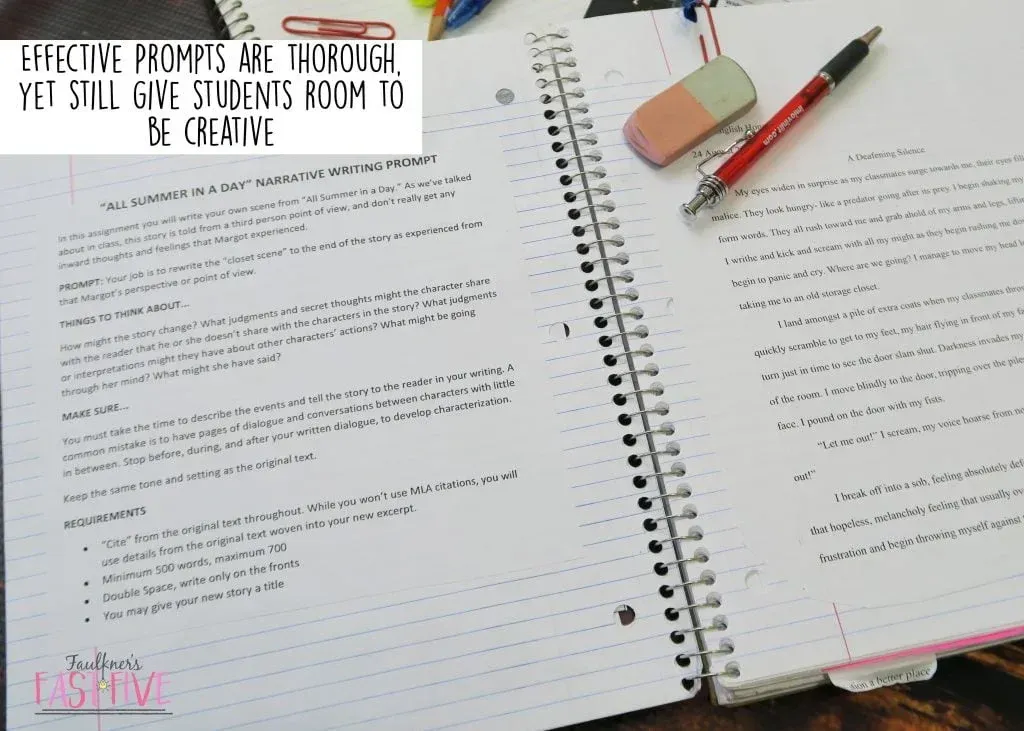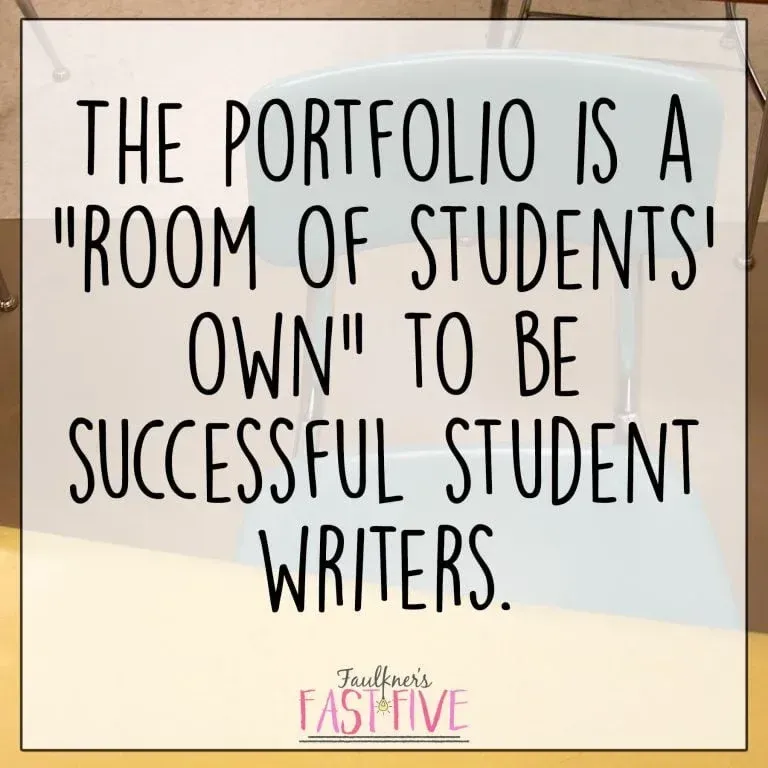A Formula for Successful Writing
Instructions Series #2 the
Old-Fashioned Writer's Portfolio
We’ve arrived at stop two (See Post #1 here and Post #3 here) of my formula for successful writing instruction, and that is the writer’s portfolio. It’s important for this post to come second in the series because it requires some prep work and proactive planning. To have the writer’s portfolios as a staple and routine in your classroom, you’ll want to have them ready and set up the correct way from the start. It can be done midstream, but it will be easier and more effective to get going with it up front. In this blog post, I’m going to explain the portfolios with a Q/A style format.
What are the benefits of having these portfolios?
Tracking and feedback are two huge pieces of a successful writing program – and devoting space and time to these two elements will set you and your students apart! Administration loves to see that you are tracking your students, and it’s not always easy to do that in a streamlined and simple way. With the writer’s portfolio, students do their own tracking based on their scores and feedback that you give right in the notebook. Their charts and work samples are all in one place. Plus, parents can see their children’s growth at a glance, too. When my students set up their portfolio, right after the table of contents is the “Chart Your Writing Scores” sheet. Then, as we add paragraphs and essays, they keep track of their scores. Every time we have a writing assignment, students take time to reflect after scores have been returned. We always chart the scores, and sometimes I even have them insert a self-evaluation form behind the essay for further reflection on the feedback. Usually, I do that for major writing assignments. Either way, it really helps to have all of this material in one place, and it really isn’t that big of a time investment for you or your students. Once they are set up, they just really take care of themselves. Additionally, organizing the teenager is a beast in and of itself… outside from trying to have a successful writing program. That said, given the way I teach writing, with vocabulary, notes, sample essays, etc., it is a nightmare if students can’t find all of that material and have it all at their fingertips at a moment’s notice. Nothing we do in my class is ever put away to be forgotten. One thing always builds on another. Therefore, it is imperative that we keep it in all one place.
How will this help my students be better writers?
Writing is a process, and part of that process is learning the pieces and parts and seeing how we grow and change. Facing challenges and celebrating triumphs gives students the confidence they need to keep writing. I also think seeing everything in one place gives them a sense of accomplishment because it’s something they created. It’s certainly only one piece of the puzzle, but it’s the piece that holds it all together. The writer’s portfolio becomes the literal toolbox for students with everything they need to pick up and get started building their essays.
What do I need to get started?
Plan to provide or require your students to have a simple one-subject spiral notebook. It’s as simple as that! No fancy binders, sheet protectors, etc. Just a simple $.50 notebook. You’ll also need some large paper clips and ribbon to make bookmarks. Students mark the page of where I need to flip to grade their current writing piece, and it saves so much time and eliminates the page flipping! Of course, scissors and stick glue will be required as well!
What goes in the writer’s notebook?
Everything. Again, very simple! Everything related to writing. I do like to have my students arrange the notebook by the units we do, which are by the modes. Typically, the first unit is the narrative mode.
Why not just have it all in the regular binder they use for the class?
While writing isn’t a separate part of the class, I think the writer’s notebook does need to be, so when students need to begin writing, their space isn’t cluttered. Disorganization can be a stumbling block for writers, and we want to create an environment as free from distractions as possible. Virginia Woolf said to be a successful writer, she needed “a room of her own.” This writer’s portfolio is a space set aside for students to be adventurous, to make mistakes, to try new things, to have successes, to brainstorm, and to create. It is a “room of [their] own” to be successful student writers.
Sign up for my monthly newsletter – “Teaching Tidbits” – that is delivered directly to your email inbox each month. Each month you’ll get announcements, tips for teaching, updates on new and revised resources, and, of course, an email-only exclusive FREEBIE! (You can SUBSCRIBE on the "Stay Connected" Tab!)
Love this content?
Sign up for my email newsletter with more tips, ideas, success stories, and freebies!





